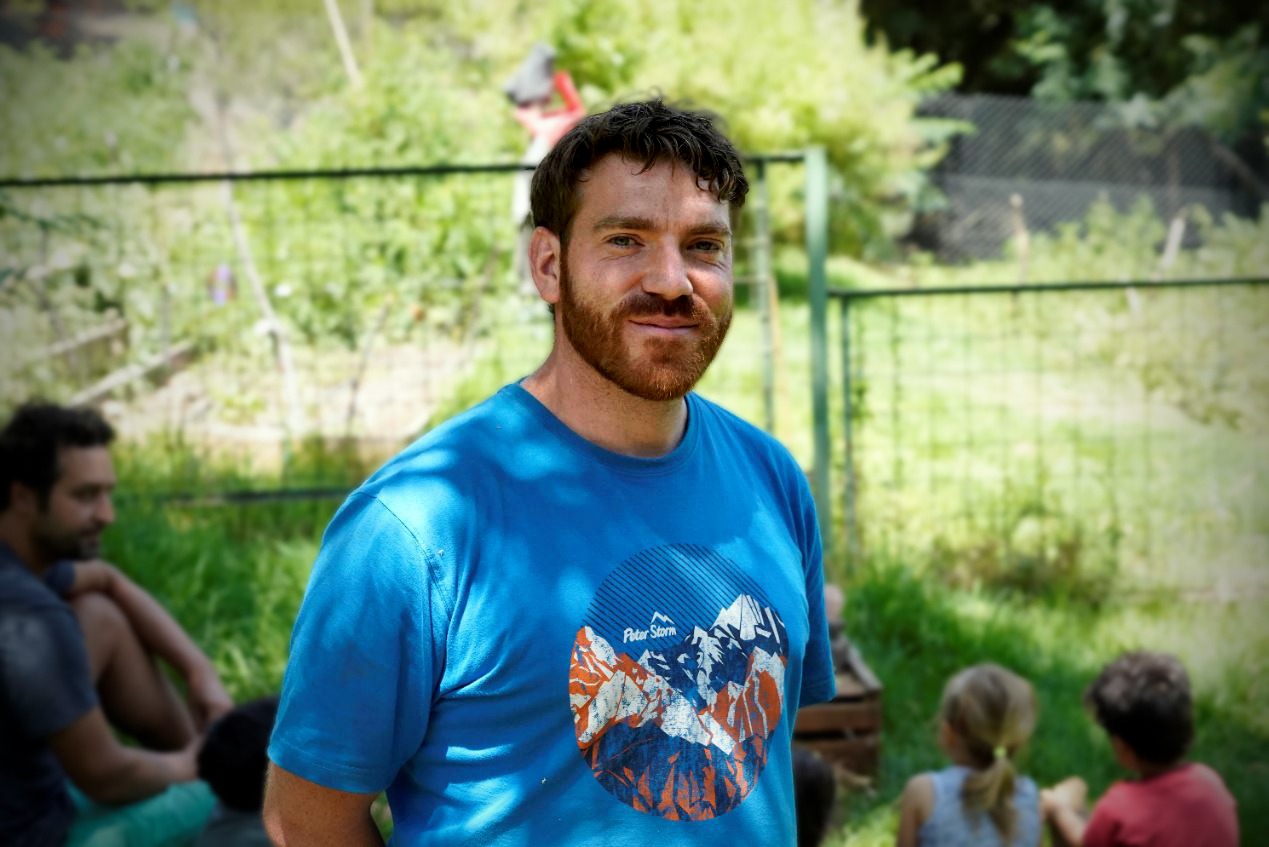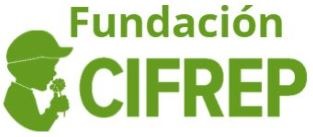
ames Crowdy came from London to do an internship for two months (January and February 2020) at the CIFREP Foundation, in Santiago de Chile. James is finishing his studies in forest school pedagogy in the UK.
Why did you choose CIFREP Foundation to do your last practice, in Chile, to become a forest school leader?
I had considered a few different placements and I had been in contact with a few different people in Chile and I was also in contact with an organisation in Bolivia. It was the philosophy behind CIFREP that made me really want to want to come here. It is very much within the forest schools principles and the benefits of child led play. For me it was the biggest picture of what the CIFREP Foundation wants to achieve that really made me excited and want to work here. Also I read an interview with Matias Knust, the director. The CIFREP Foundation have high aspirations to spread nature education and at the moment there is a big need in the world to reconnect with community, food, nature, each other, ourselves, and our own bodies. I felt that CIFREP Foundation is exactly where I am heading at the moment and I was really keen to get involved.
How do you see the work and the location of the first forest school in Santiago?
I think here, in Granjaventura, it is a really good place for a forest school you have everything you need. And I think there is a lot of possibilities here. Granjaventura is very impressive, children can have a simple place to play and in other parts of the park the playing areas are more complex and thats great as it develops many skills and increases the confidence of the children. Also I feel developing a close relationship with animals, especially farm animals is really special and quite unique and at this time of disconnection I feel it’s super important to know the animals, especially the ones that we use for food and clothes. Its very important and its amazing to have farm animals in a big city such as Santiago.
Where did your interest in the forest school pedagogy came from?
Forest schools add value to woodlands and natural spaces and also one of my main reasons for my interest in nature connection is to do with the health benefits of nature and since that course i’ve been really interested in Nature therapy and Eco Psychology. I’ve allways had an interest in helping children but I never knew how I was going to do it.
I was studying countryside management, which I was studying as I wanted to work in conservation full time. I needed to do some written work where we could chose are own topic and I had just finished reading an article about conservation and about how adults are uneducated in nature in England. The article was saying how children need to be educated in the natural environment to help preserve natural spaces but then the parents can’t teach them because the parents don’t know.
So I started to look into nature connection as well and this is where I really got interested. My interest in forest schools is kind of a combination of nature connection and conservation.
What are your studies as a forest school leader about?
It’s to be able to safely run your own forest school with knowledge of tool work, games, songs and gain an understanding of childhood development and also to get an understanding of the philosophy behind forest schools.
The way my forest school teaches is in three sections. The first part covers tool work, so working with tools and in a forest school you need to know how to safely use them and how to teach safe usage of the tools, also how to look after them and keep everyone safe. Also in part one, there is how to use ropes, differents types of knots and when to use them.
The second section is to create policies and procedures, and this is to ensure that you have things in place for health and safety which covers fire safety, risk assessments and part two makes sure you have procedures in place in an emergency. And a main part is following three children and observing their development each week.
The third section is a write up of what happened with the children during the observations and I also have to write about my own journey as a forest school leader. It also covers the ecological impact of the site and how to minimise damage.
To summarize the course is to make you very aware of the issue of forest schools and why its important and how you should go about practising in a safe way which follows the forest school principles, promoting holistic development and supporting children’s natural learning.
Where did you study to become a forest school leader and why did you choose them?
They are called huathe.org, and the name comes from the Hawthorn Tree. I met them when I was volunteering in an ancient woodland and I was completing an internship with the WildLife Trust, which is one of the biggest organisation for conservation in England. I have two teachers, Carol and Liz. Carol said that we need more men becoming a forest school leader. I did with them because they are very active, they teach in China, Ireland and the USA and also… a part of being a forest school leader is to continuously develop your skills and thats one reason why she was there on the green wood working course. They not only teach, but they do stuff in the woods and also they have a lot of experience and both have a background as teachers. Also they were connected with the forest school at the woods where I was living and completing my internship, so I felt I was in good company.
What are the differences you have seen between traditional schools and forest schools?
The most noticeable difference is that there isn’t as much adult input, as I was working for a forest school for around seven months in the past year. As the children will be doing stuff but not necessarily guiding by an adult. When I was working in a primary school many years ago, it was more like this is the activity and this is the outcome we want. So the big difference is more about the process of learning and not the outcome. So for example a craft activity will be about the child engaging with that task and the focus is on the process of learning. Rather than what they achieved at the end of it, because it’s all development. I volunteer in a primary school maybe ten years ago because I was considering to be a teacher for a while and I really didn’t enjoy that much, I think it is a stressful environment for everybody, definitely students, myself as an assistant and the teacher. And some classes were better than others because I was in a few different classrooms.
But I think that being in nature definitely from my experience has a positive impact, like a calming effect, children can express themselves, they are not stuck sitting down at a desk, which is a really unnatural thing to be doing. So yes, the children seem happier at forest school and less intense than in a regular school. In a forest school, I could see their development and being exposed to the outdoors all year round and playing in nature using their own imagination to learn and explore. Those children were strong, resilient and confident. And this is not what I seen at the primary school.
You come from London. What do you do when it’s raining or snowing?
In the UK, the weather is unpredictable. I was there in winter and some days were really cold, and if it rains for a long time, or the rain is continuous, we took the children to museums or libraries. If it was a little bit of rain then we would just let the children play, we made sure they had waterproofs. And if it rains whilst we are on site at the forest school, then we put Tarps up (covers) so the children were undercover wearing waterproofs. For the clothes, we ask for donations. So when the children get to big for their waterproof and winter clothes, we ask parents if they can donate them.
Also we made fires when it was really cold and if we were onsite and the weather turned bad we would sit in our log circle, often with a fire and either make crafts, tell stories or cook popcorn which is good fun for the children.
And the parents… Yes, maybe some of the parents were abit nervous at first. Like: ‘Oh it’s too cold for them’ but then after a while, they could see their children becoming more resilient, and not so fussy so they supported it and they encourage them to get on with it. And the parents were happy, they want strong, resilient and independent children and that’s what they are getting.
Which authors and books can you recommend to get into forest school pedagogy?
Jon Young I highly recommend he has a book called Coyote’s guide to connecting with nature. He doesn’t do forest school but teaches nature connection and does a lot of work with children. My forest teachers recommended his work above all the other books they presented us with. I’m a big fan and he does amazing work, I would advise people to look up the art of mentoring which he facilitates. I would also recommend any books by Sara Knight, who writes about forest schools. The last child in the Woods by Richard Louv who talks about nature deficit disorder. Your Brain on Nature by Alan Logan which has a 50 page bibliography full of scientific evidence on the health benefits of nature connection. Also a really nice and practical book on forest schools is: Play the Forest School Way: Woodland Crafts for Adventurous Kids by Jane Worroll.

Comentarios recientes